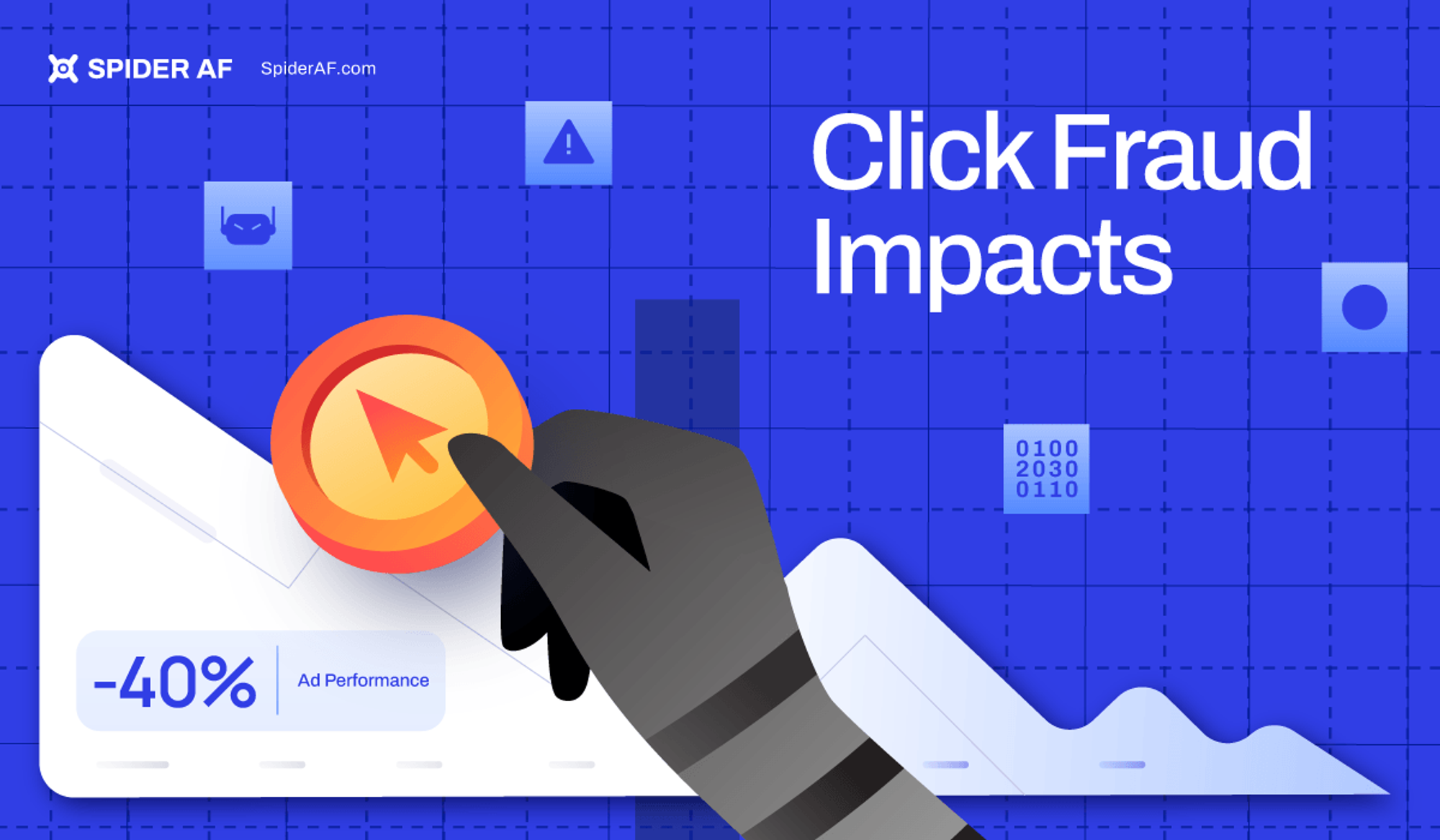Maximise ROI,
Minus the Click Fraud.
Supercharge Your Marketing Efforts with our Cutting-Edge Click Fraud Protection Software. Say Goodbye to Wasted Ad Budgets and Hello to Maximum ROI.
Thank you! Your submission has been received!
Oops! Something went wrong while submitting the form.

Real-time Fraud Detection & Blocking
No Credit Card Needed
Start Your FREE Ad Fraud Diagnosis Today!
Real-time Fraud Detection & Blocking

Real-time Fraud Detection & Blocking

Start Your FREE Ad Fraud Diagnosis Today!

No Credit Card Needed

Real-time Fraud Detection & Blocking

Trusted by marketers from every industry.




SOLUTIONS
Protect Your Ads Against Invalid Traffic
Spider AF defends your online ads from invalid traffic, fake clicks and suspicious activity in real-time. Protect your ad budget and boost conversion rates with our click fraud protection solution. Prevent click fraud, maximize ad spend, and reach genuine users across platforms.

Combatting PPC Fraud
Protect your PPC campaigns with Spider AF's robust suite of defences, including –

IP Blocking

Geomasking

Placement Blocking

Audience Exclusion

Automatic Fraud Blocking
Find Out How


Affiliate Fraud
Protection
Spider AF provides powerful protection against Affiliate Fraud with –

Automated Affiliate Fraud Detection

Manual Deduction for Invalid Leads

Ad Location Optimizer
Find Out How


Shielding
Lead Forms
Spider AF safeguards your lead forms with precision, offering –

Fraudulent Lead Detection

Real-time Blocking

Seamless CRM Integration

Organic and Paid Source Coverage
O
Find Out How

Are Bots & Invalid Traffic Hurting Your Ads?
Find out if your ads are targeted by Click Fraud. With Spider AF, detect and block fraudulent activity to optimize your ad budget, and prioritize click fraud protection.
Get FREE Click Fraud Diagnosis


Your Partner in Ad Budget Optimization
& Click Fraud Protection
Smart Savings
Spider AF helps you save money wisely. Our tech spots where your ad budget is being wasted, so you can invest in better ads for better results.

Transparency
We believe in transparency. When we block something, we'll tell you why. Our reports are straightforward, so you always know what's happening with your ads.

AI Guidance
We guide your AI with top-notch data. No more wasting time or money on useless leads. We ensure your AI learns the right way to improve your results.

Japanese-Grade Support
Expect world-class care with Spider AF. We uphold Japanese standards for customer satisfaction, ensuring you're always in good hands.

CONNECT
Ad fraud protection
across all platforms
Seamlessly integrate Spider AF with leading ad platforms including Google, Microsoft, Twitter, Meta, and more. Stay secure across channels with our tailored ad network and DSP integration.
Thank you! Your submission has been received!
Oops! Something went wrong while submitting the form.

But Don’t Just Believe
What We Say...
BLOG
Empower Your Digital Journey
Unlock the secrets of digital marketing and strengthen your defences against ad fraud with ease. Dive into insightful articles that decode the digital landscape, learn from industry experts, and discover innovative strategies for success.
Frequently
Asked Questions

What is Ad Fraud?
.svg)

Ad fraud or click fraud involves creating fake ad impressions, clicks, and conversions to exhaust advertising budgets. Predicted to cost advertisers $50 billion (¥6.4 trillion) annually by 2025, ad fraud is a significant threat driven by malicious bots.
Fraudsters aim to profit by offering false metrics, using techniques like click farms, click flooding, and SDK spoofing.
Spider AF specializes in click fraud protection, offering advanced detection and prevention solutions to protect digital advertising campaigns.
How does Spider AF ensure Click Fraud Protection?
.svg)

Spider AF Tracker is installed on websites to provide owners with comprehensive traffic insights. While website owners decide when to activate the tracking tag, it's recommended to install it on all pages for maximum effectiveness.
Once deployed, Spider AF Tracker scans and analyzes device and session-level metrics, including page locations, referrers, IP addresses, and user agents. Sophisticated algorithms identify signs of bot behavior, enhancing ad fraud detection capabilities.
How does Spider AF detect Invalid Traffic?
.svg)

Spider AF employs sophisticated techniques to detect both general and sophisticated invalid traffic. General invalid traffic includes crawlers, data centers, and invalid user agents, while sophisticated invalid traffic comprises bots, fake user agents, repeated clicks, invalid IP addresses, and domain spoofing.
Our detection methods analyze IP addresses, user agent data, and browsing patterns to identify and prevent fraudulent activity, ensuring ad campaigns reach genuine audiences and maximize ROI.
How does the "Free Click Fraud Diagnosis" work?
.svg)

The Spider AF trial offers full access to the Elite plan for two weeks. During this period, Spider AF analyzes your site's status without activating blocking features, ensuring adequate data collection while minimizing the impact of outliers.
You'll have visibility into all detected invalid activities and access to features like placement and keyword insights. Spider AF continuously monitors your webpage's traffic to ensure correct setup of configurations.









.png)








